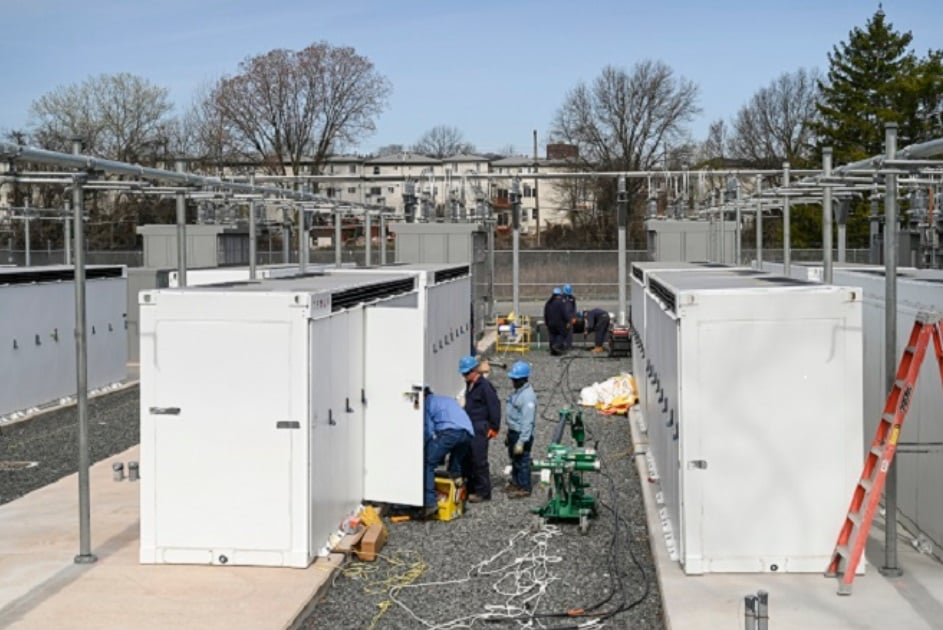
ESN Premium speaks with with King Look, director of research and development at New York utility Con Edison, about implementing long-duration energy storage (LDES) in New York City.
The week before the conversation, Look participated in a panel on LDES use cases and commercialisation at the Wood Mackenzie Solar & Energy Storage Summit 2025 in Colorado, US.
That panel was moderated by Allison Weis, global head of storage at market research and analysis form Wood Mackenzie. It also featured Raja Sundararajan, executive vice president of strategy and customer solutions at Wisconsin-headquartered utility Alliant Energy and Benjamin Lavoie, senior director of energy storage & EV solutions at renewable energy, storage and energy efficiency solutions provider Ameresco.
New York’s steam system
During the panel, Look spoke on potentially using LDES technology to help decarbonise Con Edison’s steam system to allow its steam customers to meet the requirements of New York’s Local Law 97 (LL97), which aims to reduce the CO2 emissions of large buildings in the city by 40% by 2030 and reach net zero by 2050.
Try Premium for just $1
- Full premium access for the first month at only $1
- Converts to an annual rate after 30 days unless cancelled
- Cancel anytime during the trial period
Premium Benefits
- Expert industry analysis and interviews
- Digital access to PV Tech Power journal
- Exclusive event discounts
Or get the full Premium subscription right away
Or continue reading this article for free
LL97 applies to buildings over 25,000 square feet; non-compliance brings a US$268/tonne CO2 penalty.
In addition to this requirement (as part of the New York City Climate Mobilisation Act), in 2022, Con Edison announced it would decarbonise its steam system in support of New York State’s net-zero-targeting Climate Leadership and Community Protection Act (CLCPA) and the Climate Mobilisation Act.
Con Edison operates the largest steam system in the US, with customers that include the Empire State Building, Grand Central Station and other iconic landmarks of the city.
In a 2022 emissions report, the utility notes that over 90% of its non-greenhouse gas air emissions are generated by powering its steam system.
Look says Con Edison is currently looking at electric boilers as one option for decarbonising the steam system.
However, can put a lot of load on the grid, which can require costly system upgrades. To alleviate these issues, the company is considering thermal energy storage.
“One solution we’re exploring is thermal energy storage. It allows us to control when we charge and discharge energy, easing the electric load while producing both steam and electricity—helpful for cogeneration,” Look says.
He continues, “Another driver is resiliency. As we rely more on renewables, there will be times, especially in winter, when solar and wind aren’t available. That’s where long-duration storage of up to 72 hours or more becomes critical.”
The thermal energy storage system in this case would work with resistors generating heat and retaining it in hot blocks, with the ability to get up to 1500°F (816°C) or higher.
When the system is discharged, water is pushed through a heat exchanger and creates superheated steam, which powers a steam turbine to generate electricity and street-pressure steam.
In May of 2024, a concrete thermal energy storage pilot project at a gas plant in Alabama, US was tested.
This system boasts an energy storage capacity of 10MWh (electricity) and utilises heat from a gas plant unit to warm concrete blocks, which store energy thermally. The stored thermal energy is later converted back to the power plant by transforming feedwater into steam to produce electricity.
Saudi Arabian oil firm Aramco has also started engineering studies for an ‘industrial scale’ deployment of a similar technology from Rondo Energy called a ‘Heat Battery.’
LDES research
Look emphasises the importance of shared research through the Electric Power Research Institute (EPRI) energy storage programmes.
EPRI is a non-profit entity that performs independent research on the electricity system and is funded by membership mostly utility companies.
Look explains about EPRI:
“One initiative they have is a comprehensive database of all almost the energy storage solution providers. More recently, they are creating a consortium, which we joined.”
“This consortium is a pooling of demonstration data. You have these utilities, energy storage providers, and when they do demonstrations, they provide performance data on how the solution actually works in real life. Because we’re part of the consortium, we get to learn and see them; we could even witness them.”
Creating a demonstration project can be a large commitment, and having access to research about a variety of LDES technologies can help utilities like Con Edison make the best decision possible without having to spend the money required for each individual technology demonstration.
Many LDES technologies are also in a pre-commercial stage, making it difficult to know exactly how the technology will perform in a real-world scenario.
Raja Sundararajan summarised this challenge during the LDES panel discussion, saying:
“Until the market provides the right price signals, you have to rely on modeling and hope regulators or customers will take a leap of faith.”
Novel electrochemical energy storage technologies looking to supplant or serve as an alternative to lithium-ion batteries may struggle to commercialise and scale up, Anh Vu, senior energy storage engineer at market intelligence firm Clean Energy Associates (CEA) wrote in a Guest Blog published today by Energy-Storage.news.
Vu noted that lithium iron phosphate (LFP) batteries used in stationary storage applications currently outperform challenger technologies like sodium-ion or flow batteries in metrics such as energy density and power density.
Improvements are being made all the time in the lithium-ion space, which has the advantage of scale. However, novel non-lithium technologies could find their place in serving niche applications, with Vu noting long-duration storage as an example. For industrial heat, thermal energy storage could perform a task that electrochemical batteries may not be suited to.
